
The Solar-Terrestrial Centre of Excellence (STCE) is a collaborative network of the Belgian Institute for Space Aeronomy, the Royal Observatory of Belgium and the Royal Meteorological Institute of Belgium.
 |
Published by the STCE - this issue : 25 Sep 2014. The Solar-Terrestrial Centre of Excellence (STCE) is a collaborative network of the Belgian Institute for Space Aeronomy, the Royal Observatory of Belgium and the Royal Meteorological Institute of Belgium. |
| Archive of the newsletters | Subscribe to this newsletter by mail |
It's not so easy to distinguish various transients in in situ data of the solar wind by just looking at the magnetic field and solar wind parameters such as speed, temperature and density. Most can pick out the signature from a coronal mass ejection, featuring increase in magnetic field and decrease in temperature, and sudden increase in density, speed and magnetic field strength if the CME is driving a shock. Things get more complicated when it comes to the effects of Sector Boundary Crossings (SBC) or from the interaction region related to a fast solar wind stream coming from a coronal hole (increase in speed and temperature).
A coronal hole rotates together with the Sun: the associated solar wind structure is therefore called a Co-rotating Interaction Region (CIR). When the coronal hole survives several solar rotations, it is recurring and it's important for medium-term space weather predictions. But let's start by having a look on what SBC and (C)IR actually are.
The Sun is a giant magnet with magnetic field lines extending away into space (positive, "away") and other field lines returning from space to the Sun (negative, "towards"), with each solar hemisphere having a different polarity, in general. Along the solar magnetic equator, these opposite field lines run parallel to each other creating a current sheet, which is called the "Heliopsheric Current Sheet" (HCS).
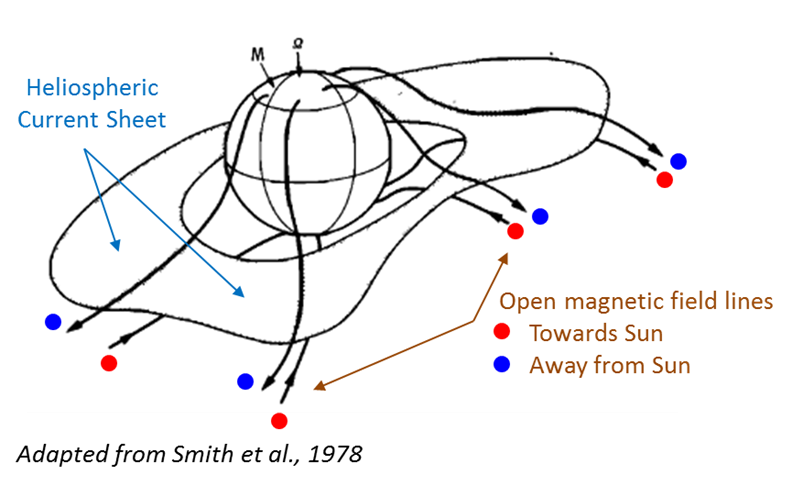
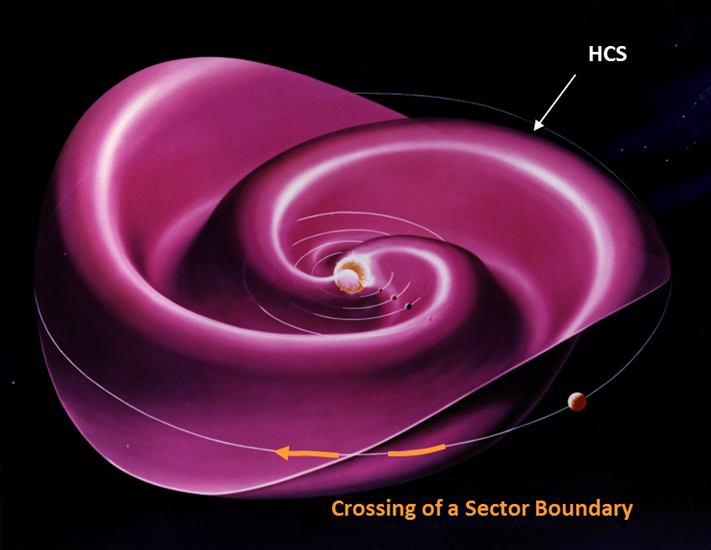
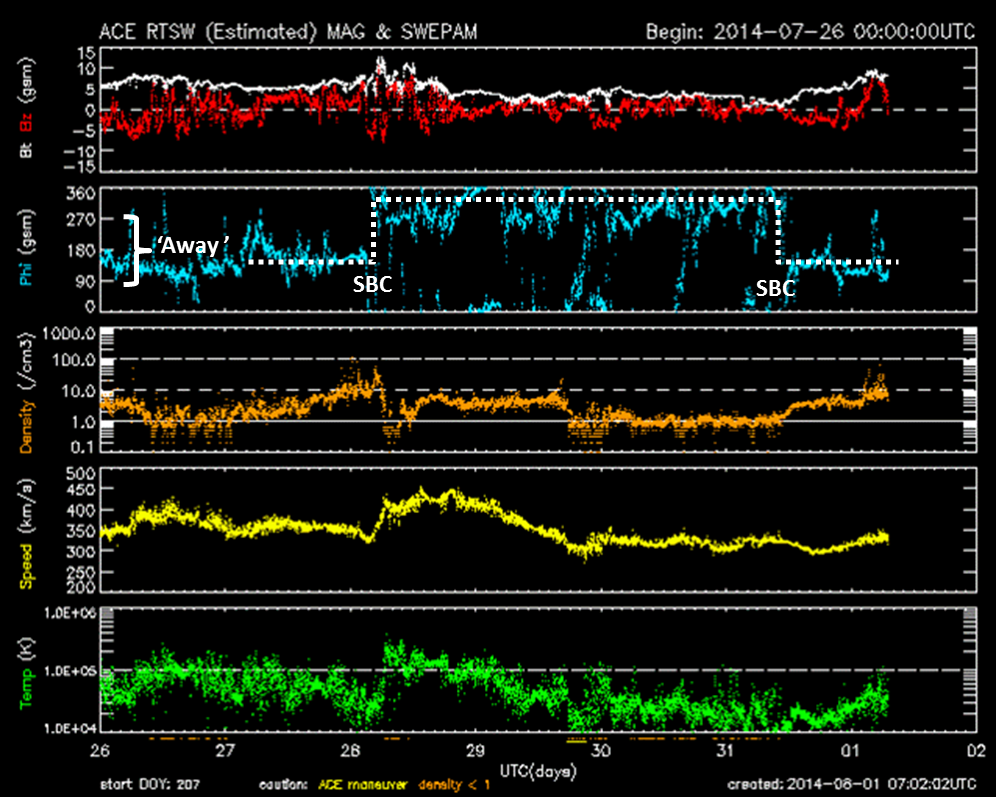
Solar particles can leave the Sun along the open magnetic field lines and at different speeds. Hence, the high speed stream from e.g. a coronal hole may interact with the slower moving normal solar wind ahead. Where the two meet, an interface results in a compressed space of increased density and magnetic field strength. This interface separates the slow from the fast solar wind. At some point in space, the interface becomes a shock, sometimes already at the Sun-Earth distance. Then the speed continues its gradual increase towards the main speed of the coronal hole. As the stream interaction region passes, there's no obvious change in the direction of the magnetic field, which is usually oscillating during that period. As the stream interaction region has passed, the magnetic field assumes the direction of the field embedded in the high speed stream of the coronal hole, which may or may not be the same as that of the slow solar wind.
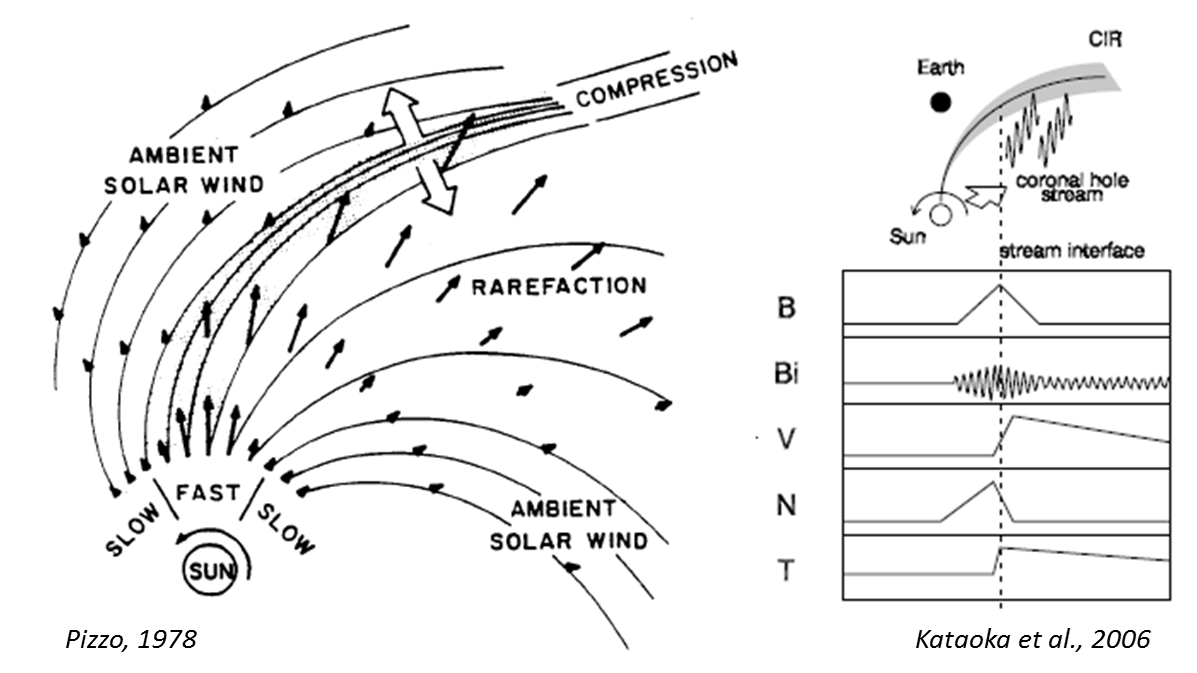
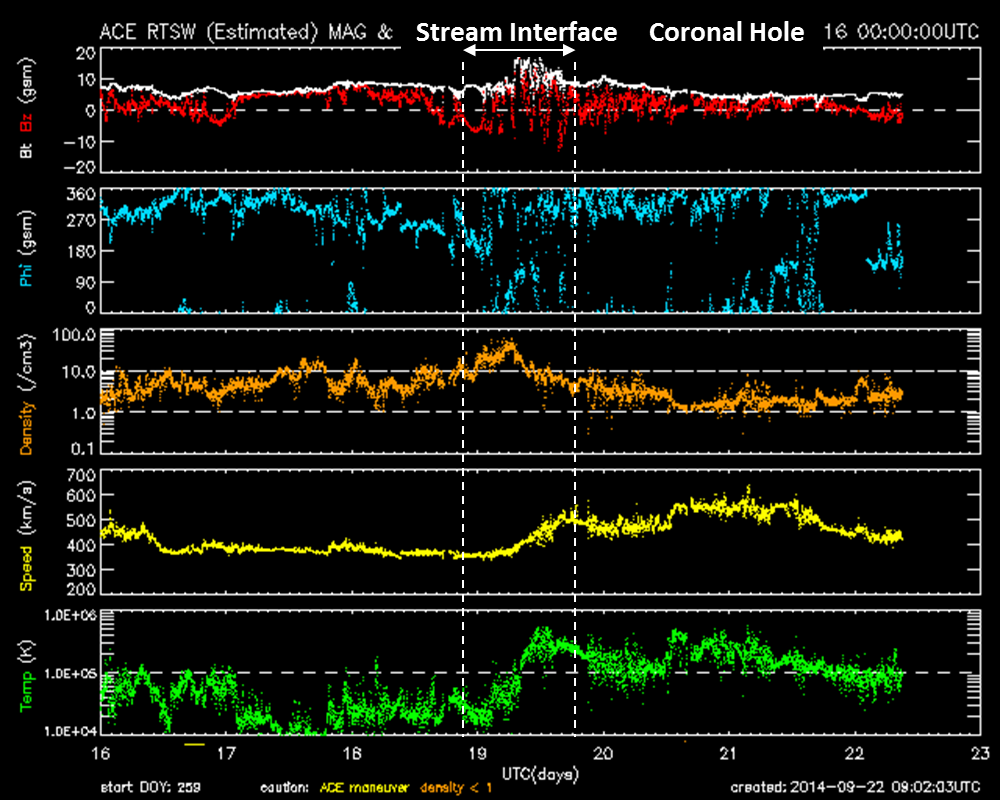
Solar flare activity fluctuated between low and moderate during the week.
In order to view the activity of this week in more detail, we suggest to go to the following website from which all the daily (normal and difference) movies can be accessed: http://proba2.oma.be/ssa
This page also lists the recorded flaring events.
A weekly overview movie can be found here (SWAP week 234).
http://proba2.oma.be/swap/data/mpg/movies/WeeklyReportMovies/WR234_Sep15_Sep21/weekly_movie_2014_09_15.mp4
Details about some of this week's events, can be found further below.
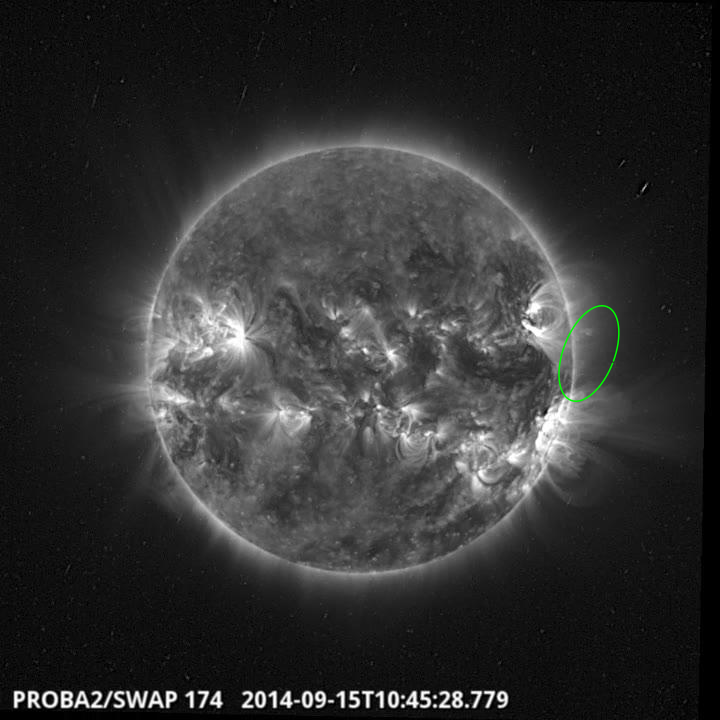
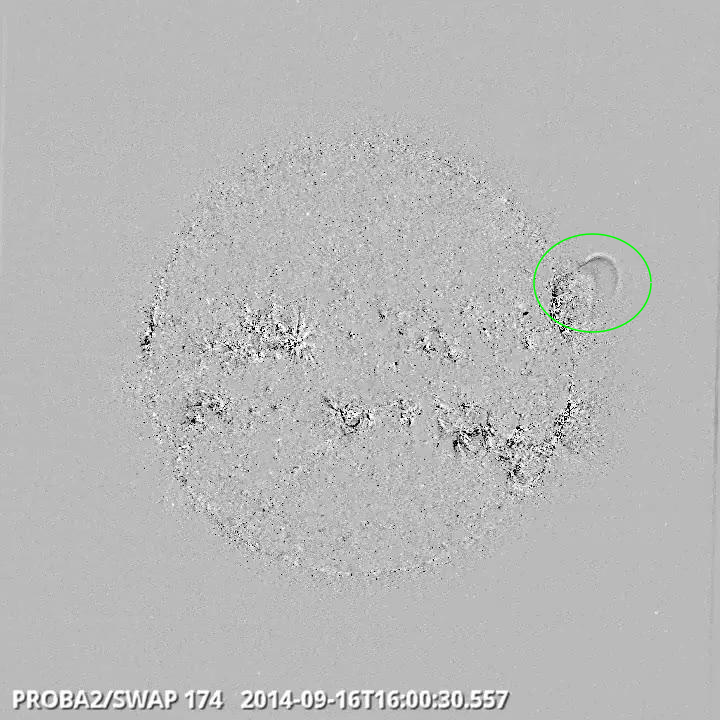
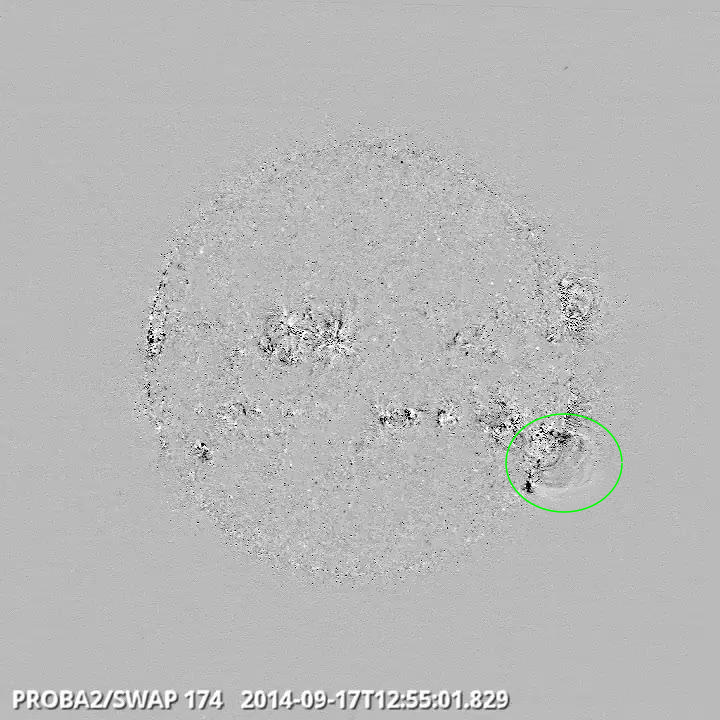
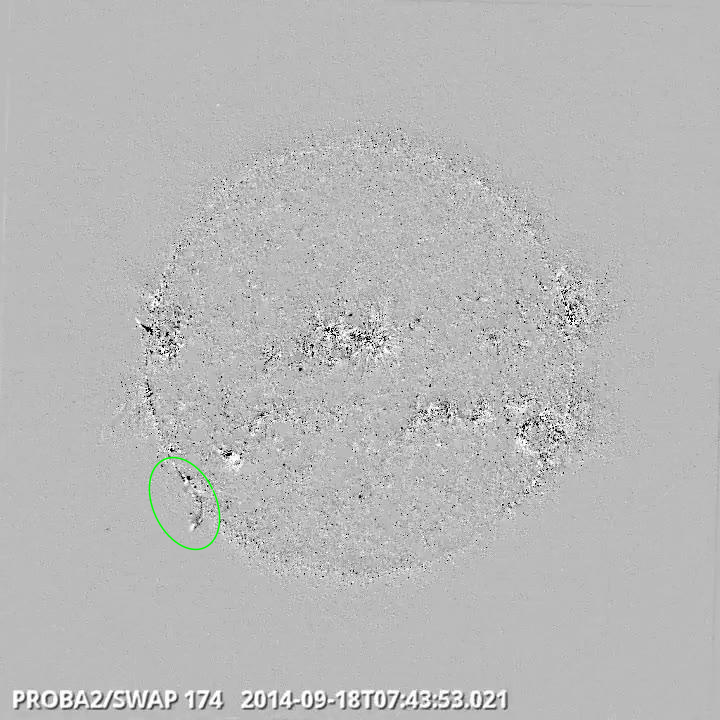
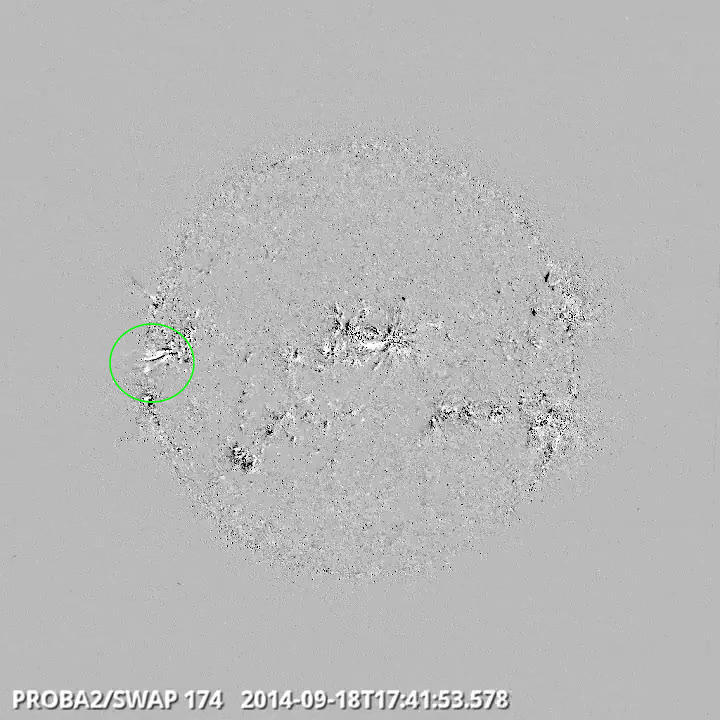
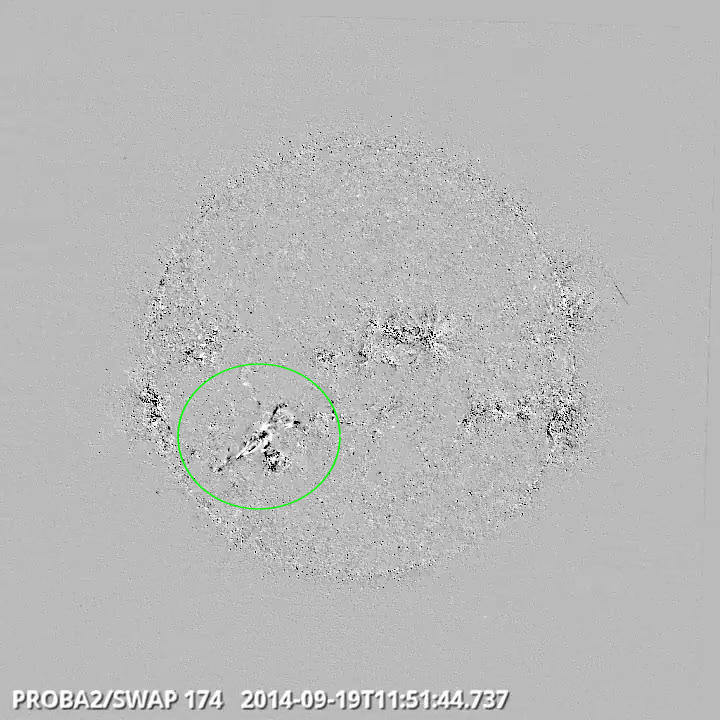
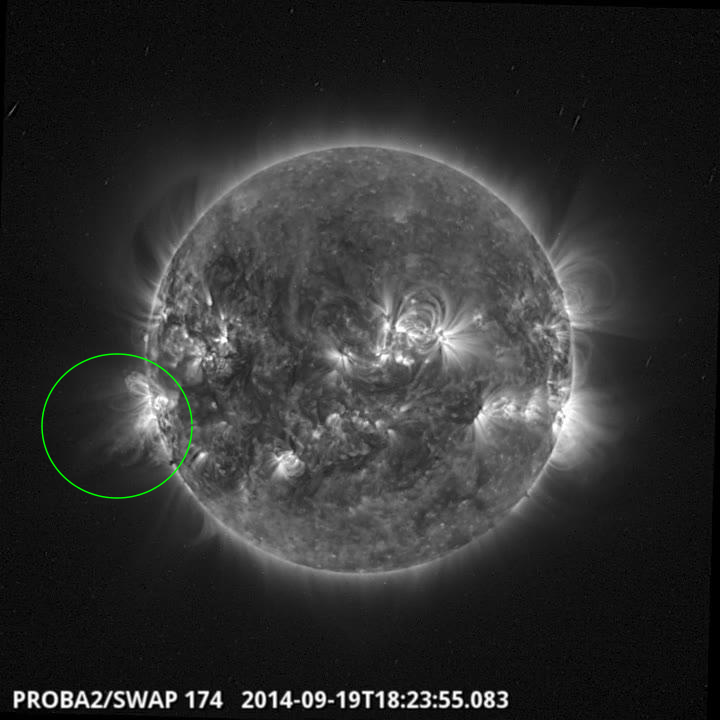
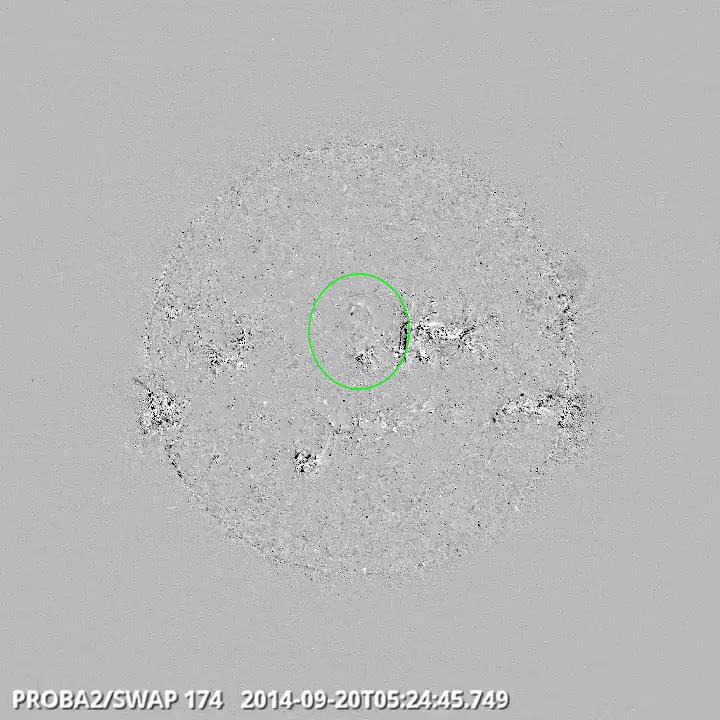
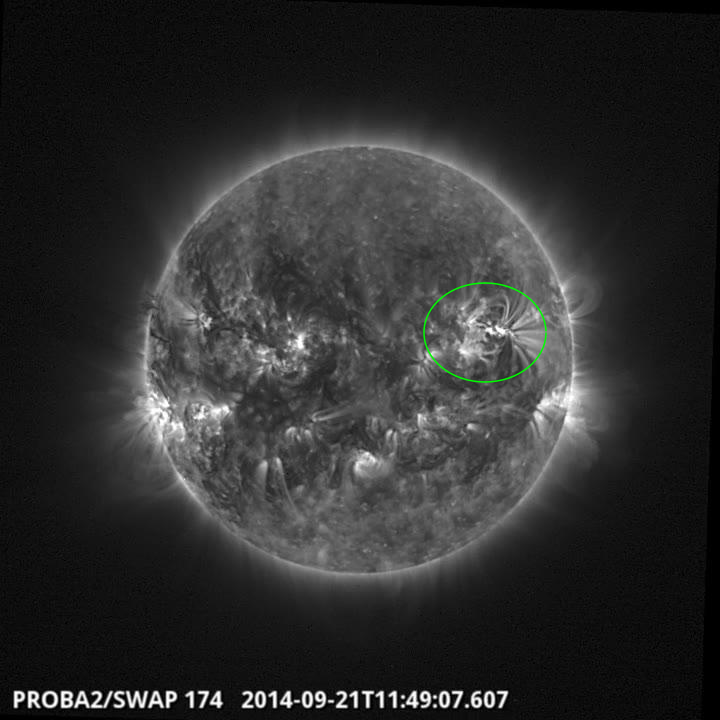
Eight active regions contributed to the flaring activity which remained at or below the C-class, except from an M1.2 flare from NOAA AR 2169 with peak at 08:41 UT on September 18. The distribution of the flares over the week and the active regions are put in the chart below.
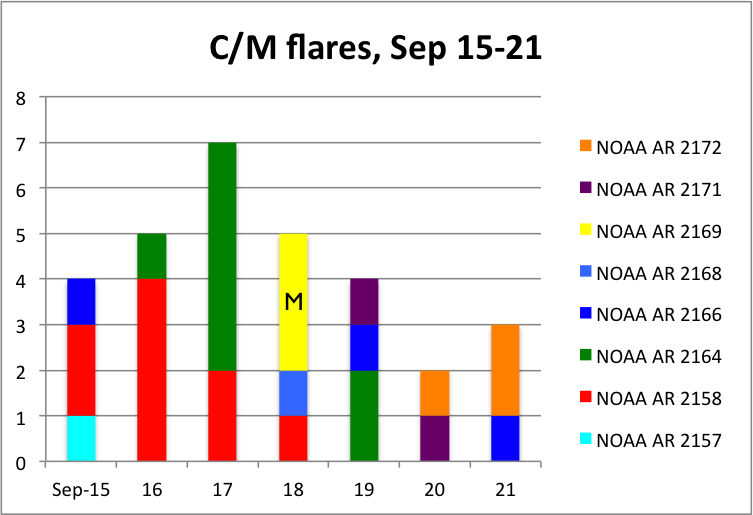
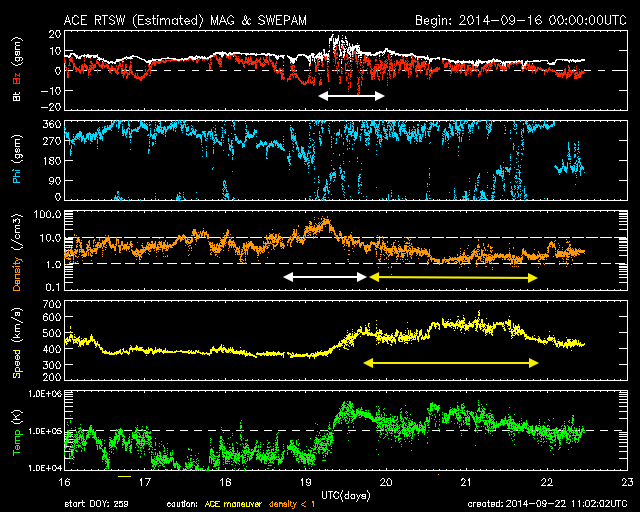
Usually, it is a coronal hole (CH) that is behind such a solar wind behaviour. We call it co-rotating because the CH rotates together with the Sun and ACE which is situated at the L1 point (1AU, just in front of Earth) would measure the same behaviour of the solar wind linked with the CH if it was located at another point on the orbit of Earth.
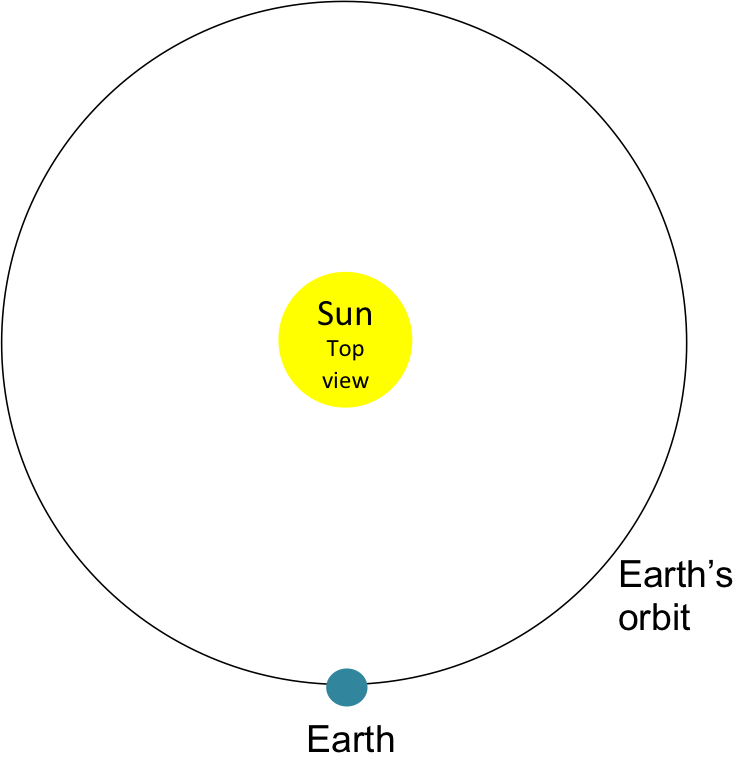
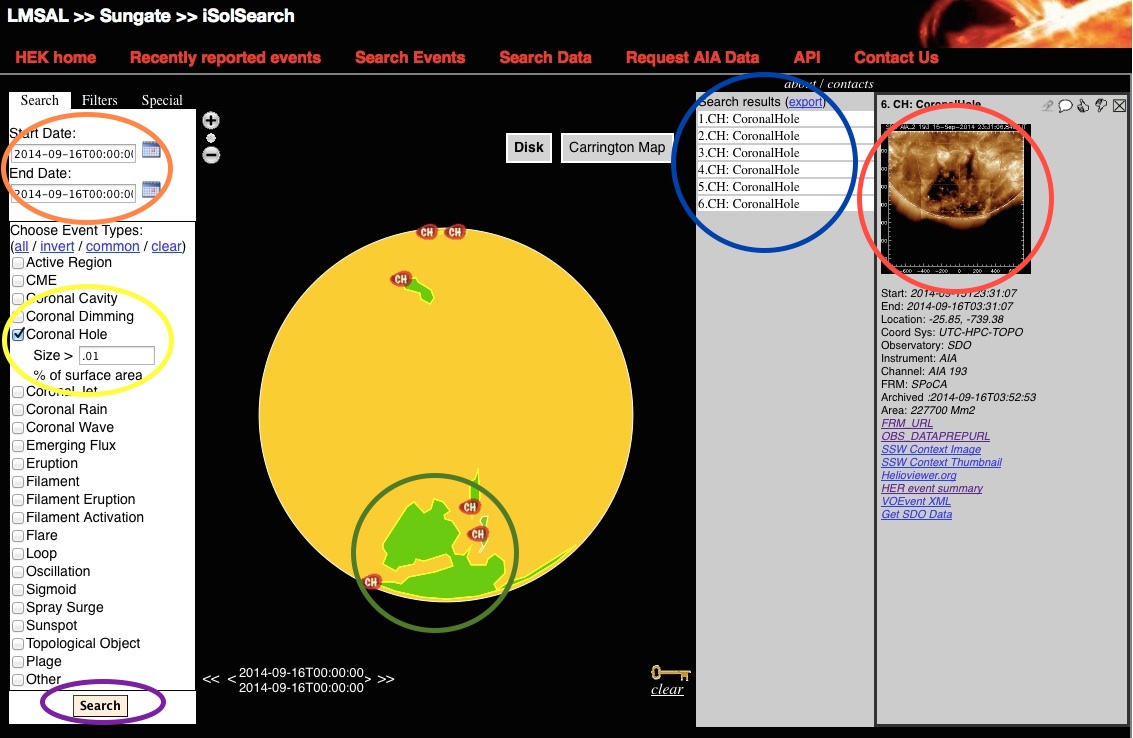
| DAY | BEGIN | MAX | END | LOC | XRAY | OP | 10CM | TYPE | Cat | NOAA |
| 18 | 0837 | 0841 | 0853 | N8E70 | M1.2 | SN | 72 | III/2II/2 | 2169 |
| LOC: approximate heliographic location | TYPE: radio burst type |
| XRAY: X-ray flare class | Cat: Catania sunspot group number |
| OP: optical flare class | NOAA: NOAA active region number |
| 10CM: peak 10 cm radio flux |
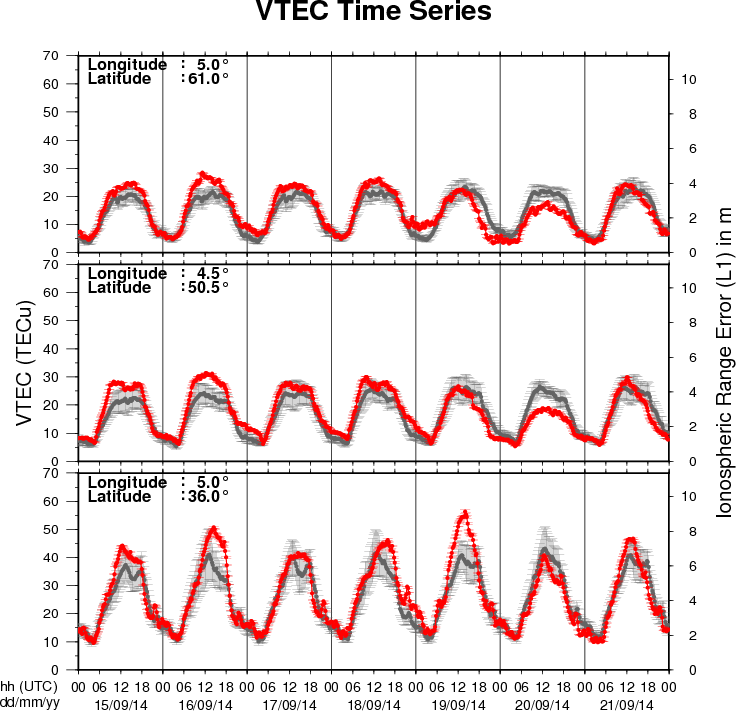
The VTEC is expressed in TECu (with TECu=10^16 electrons per square meter) and is directly related to the signal propagation delay due to the ionosphere (in figure: delay on GPS L1 frequency).
The Sun's radiation ionizes the Earth's upper atmosphere, the ionosphere, located from about 60km to 1000km above the Earth's surface.The ionization process in the ionosphere produces ions and free electrons. These electrons perturb the propagation of the GNSS (Global Navigation Satellite System) signals by inducing a so-called ionospheric delay.
See http://stce.be/newsletter/GNSS_final.pdf for some more explanations ; for detailed information, see http://gnss.be/ionosphere_tutorial.php
Start : 2014-11-12
This conference aims to bring together researchers, engineers,
users in the area of Big Data in the Space sector.
The focus is on the whole data lifecycle, ranging from data
acquisition by spaceborne and ground-based sensors to data
management, analysis and exploitation in the domains of Earth
Observation, Space Science, Space Engineering, Space Weather,
etc.
Special emphasis will be put on highlighting synergies and
cross-fertilization opportunities from domains like Climate Change,
Solid Earth Science, Planetary Sciences, Life Science,
Astrophysics, High Energy Physics, Social Sciences, etc.
We expect this conference to:
* contribute towards a common "Big Data from Space" scientific
and programmatic framework
* widen competences and expertise of universities, labs and
industrial actors
* foster networking of experts and users towards better access
and sharing of data, tools and resources
* leverage innovation, spin-in, spin off of technologies, and
business development arising from research and industry
progress
Website:
http://congrexprojects.com/2014-events/BigDatafromSpace/objectives
Start : 2014-11-17 - End : 2014-11-21
The 11th Edition of the European Space Weather Week will take
place on 17-21nd November 2014 in Liège, Belgium.
The ESWW will again adopt the central aim of bringing together
the diverse groups in Europe working on different aspects of Space
Weather. This includes but isn't limited to the scientific
community, the engineering community, applications developers,
service providers and service end users.
The meeting organisation is coordinated by the Belgian
Solar-Terrestrial Centre of Excellence (STCE), ESA and the Space
Weather Working Team. The local organisation is done by the
STCE.
Website:
http://www.stce.be/esww11/
Start : 2014-12-15 - End : 2014-12-19
The AGU Fall Meeting is the largest worldwide conference in the
geophysical sciences, attracting more than 22,000 Earth and space
scientists, educators, students, and other leaders. For 46 years,
energized and passionate Earth and space scientists from around the
world gather at the AGU Fall Meeting to connect with colleagues,
broaden their knowledge base, and embrace the joy of science. The
2014 meeting takes place Monday 15 - Friday 19 December 2014.
Several sessions about space weather are foreseen:
*
When and Why Does Space weather Forecasting Fail?
*
Addressing Operational Space Weather Needs
*
Near Real Time Data for Earth Science and Space Weather
Applications
*
Understanding Hemispheric Asymmetry and Space Weather
*
Connection of Solar Events With the Variability of Space
Environments
*
Bz from the Sun to the Earth: Observations and Modeling
*
Solar Sources and Heliospheric Consequences of Coronal Mass
Ejections in Solar Cycle 24
*
Advances in Ionospheric Forecasting - Modeling, Observations, and
Validation
Abstract Submission Deadline: August 6, 2014
Website:
http://fallmeeting.agu.org/2014/
Start : 2015-04-20 - End : 2015-04-24
This gathering was born out of the desire to collect in one
place the latest technologies required for advancement of science
in the discipline of Solar and Space Physics. In doing so, it was
recognized that the two 1998 volumes of 'Measurement Techniques in
Space Plasmas' (Particles and Fields) have been a valuable
reference and resource for advanced students and scientists who
wish to know the fundamentals of measurement techniques and
technology.
Website:
https://mtssp.msfc.nasa.gov/
Start : 2015-06-22 - End : 2015-07-02
We invite contributions on novel inversion methods with
application across the geosciences. Of particular interest are 3D
imaging, joint inversion of geodetic, geophysical and geochemical
datasets, and multi-disciplinary interpretation approaches such as
integration of gravity, EM and seismic data or thermo-mechanical
modelling studies constrained by physical parameters.
Modelling of Space Weather Effects: Solar, Magnetospheric and
Earth Resistivity Constraints (IAGA, IAMAS)
In this symposium we welcome contributions on all aspects of the
modelling of space weather and its effects, from the Sun to Earth.
This includes the modelling of the various interactions between
travelling solar storms and the solar wind, magnetosphere,
ionosphere and solid Earth and the validation of models through
measurements. Contributions on models developed to aid end-users,
such as satellite and power grid operators, survive the impact of
space weather are also encouraged.
Website:
http://www.iugg2015prague.com/joint-inter-association-symposia.htm#JA
Presentation given during a users' visit about the STCE operational space weather services and products.
http://www.spaceweather.eu/en/repository/show?id=534
Presentation given during a users' visit about the STCE operational space weather services and products.
http://www.spaceweather.eu/en/repository/show?id=535
Presentation given during a users' visit about the STCE operational space weather services and products.
http://www.spaceweather.eu/en/repository/show?id=536
Presentation given during a users' visit about the STCE operational space weather services and products.
http://www.spaceweather.eu/en/repository/show?id=537
Presentation given during a users' visit about the STCE operational space weather services and products.
http://www.spaceweather.eu/en/repository/show?id=538
Presentation given during a users' visit about the STCE operational space weather services and products.
http://www.spaceweather.eu/en/repository/show?id=539
Presentation given during a users' visit about the STCE operational space weather services and products.
http://www.spaceweather.eu/en/repository/show?id=540
http://www.spaceweather.eu/en/repository/show?id=541